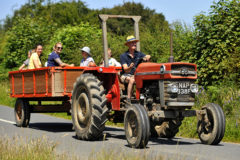Banner Lane tractor collection
Posted by Chris Graham on 1st October 2021
Patina or polish? The pretty or the plain? Andy Hayes explains to William Carson just how he likes his Banner Lane tractor collection to look.
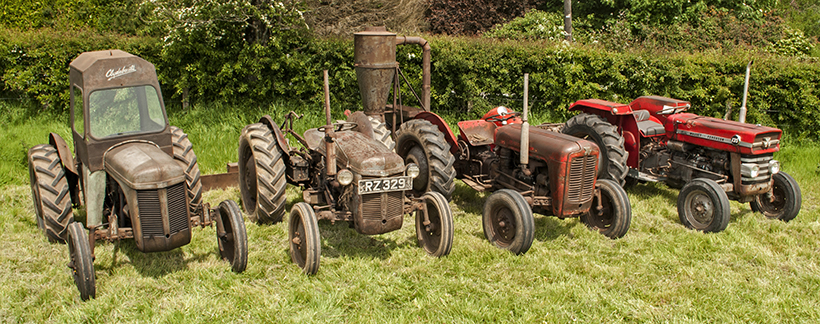
Banner Lane tractor collection: Originality is all-important as far as Andy Hayes is concerned. He sees no point in hiding their life stories under layers of two-pack and wants to keep the history of his tractors alive, for all to see.
They’re only original once. Time passes, the paint fades but history has a life of its own. If each dent and scratch could speak, imagine the tales they would tell. Andy, from Ballymena in Northern Ireland, doesn’t intend to sand the tinwork back to bare metal, fill the dents and spray on a layer of shiny, new paint. Why hide a life story under layers of two-pack? He plans to keep the history of his tractors alive, for all to see.
“I grew up among tractors,” Andy told me. “We had a TEF-20 on our smallholding, where we grazed cattle and made hay. I also spent time on neighbouring farms, where they grew spuds and worked with livestock. There were a lot of Massey Fergusons on local farms. I remember dropping spuds behind a four-cylinder MF35, and an MF65 doing some of the heavier work.”
Early experiences
When Andy left school, he went to work on a local dairy farm with a herd of 100 cows. Silage was a more prolonged operation in an era when most farmers harvested their own, and Andy remembers the Kidd double-chop filling 4t Frazer trailers. “I carted in from the field with an MF135. If the grass was wet and heavy, it wouldn’t always slide out of the trailer properly. The yard wasn’t level and, if you pulled away up the hill too sharply as the trailer reached the top of its tipping ram, the load would lift the front of the trailer and leave the back wheels of the tractor hanging in mid-air,” he recalled.
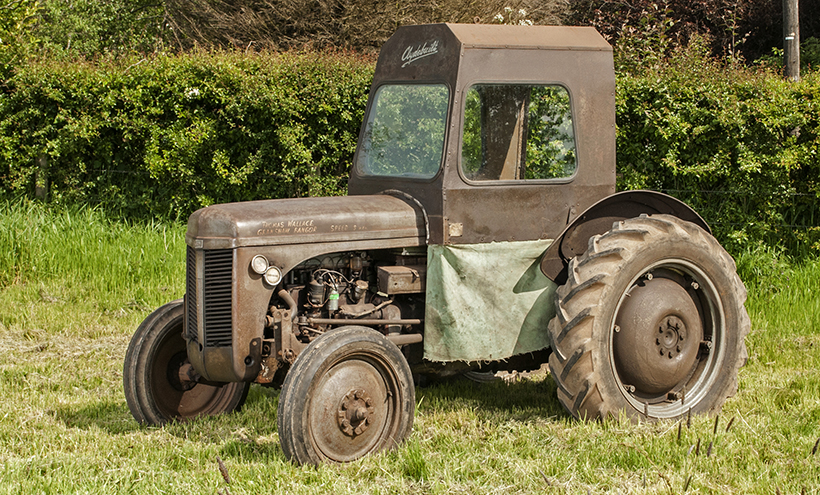
Andy’s 1949 Ferguson TEA-20, which had been stored for years in a shed under a pile of old rugs. The cab was bought at, and a replacement skirt was made from an old tarpaulin.
Andy always had an interest in vintage agricultural machinery, and so it was only a matter of time before he began his own collection of tractors from that famous factory in Coventry. “About 12 years ago, I went to see a 1949 Ferguson TEA-20 that had been stored for years in a shed under a pile of old rugs. It had been in the same family since it was bought new by Mr Thomas Wallace of Granshaw, near Bangor, in Co. Down.”
In the late 1940s and early 1950s, after the abolition of ‘red petrol’ with its reduced fuel tax charge, it was a common practice for farmers to convert their petrol-engined TEA-20 tractors to run on more affordable tractor vaporising oil, known as TVO. However, Harry Ferguson stubbornly stuck to the belief that petrol was the perfect fuel for his ‘perfect tractor’, so it wasn’t until July 1949 that, led by market demand, Ferguson’s engineers lowered the compression ratio and redesigned the fuel induction system to allow the engine to run on TVO, and new TED-20 was born.
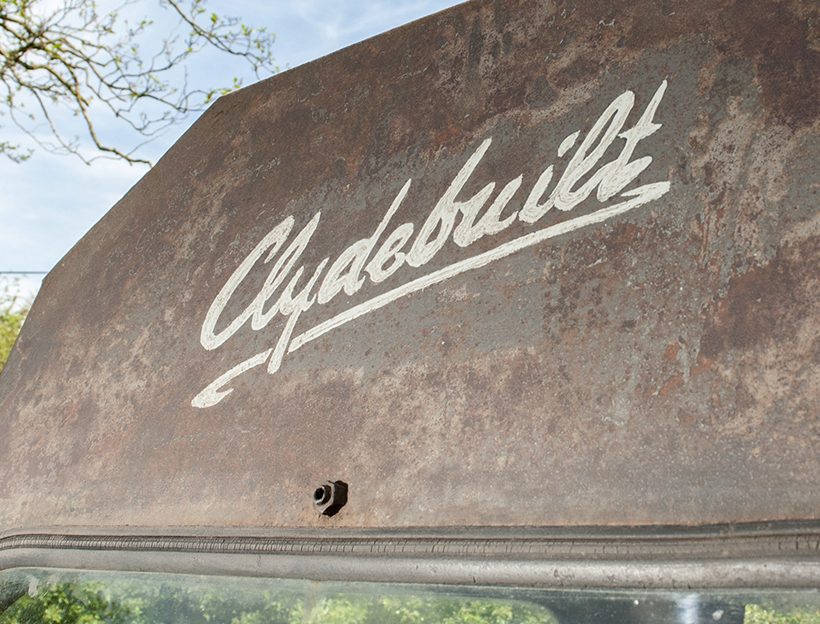
The ‘Clydebuilt’ name above the windscreen had faded, but Andy engaged a sign-writer to repaint the lettering sympathetically, then ‘distressed’ it for that authentic, aged look.
Three choices
In the meantime, those farmers who’d bought a TEA-20 were faced with three choices; trade-in their nearly-new machine for a TED version, accept the tax increase on petrol or pay for the fitment of an aftermarket conversion kit. Mr Wallace, like many farmers at that time, chose the latter option and had a Fishleigh Super Vaporiser kit fitted to his tractor. The Fishleigh arrangement had one major advantage over other alternatives; the petrol needed to start and warm up the engine was held in a small chamber on the vaporising manifold itself, obviating the need to solder a division, another outlet and a second filler cap into the main the fuel tank. On the other side of the coin, though, this meant that it would be unwise to venture far from the farmyard without first topping up the petrol chamber.
“I bought the tractor together with a teaspoon loader and a two-furrow plough. It didn’t need much more than a clean-up on the points and some fresh petrol added before I had it running.” Andy spent some time on the appearance of his new purchase. “It was red with rust, so I rubbed it down with fine Emery paper, then gave it a coat of oil to preserve that finish.
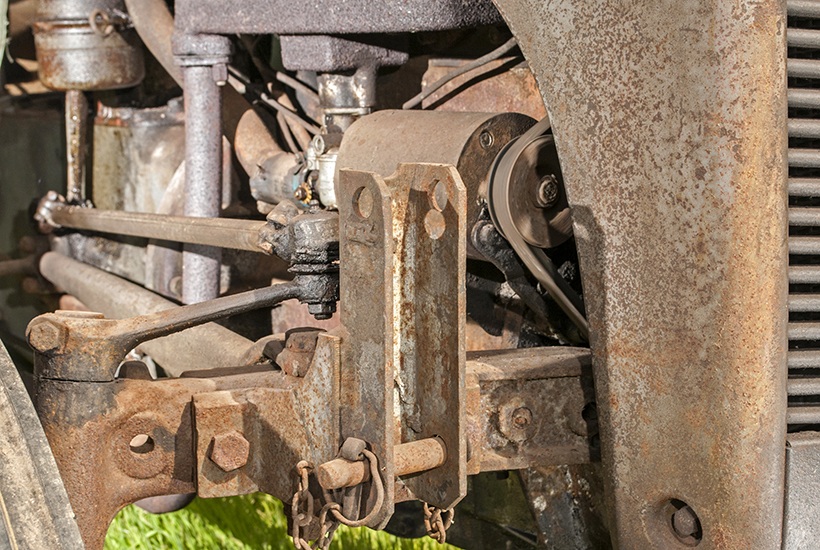
The TEA-20 was once fitted with a teaspoon loader, but all that remain of it are the brackets.
“It came with scalloped front rims which would have been correct for a 1949 Ferguson, but they’d been painted at some time in the past and didn’t look right next to all the original paint on the rest of the tractor. So, I found a pair of solid-centre rims from an earlier tractor, which had the right patina to match the rest of the machine. The cab was bought at an auction for £50 and, as it came without the skirt, I had one made from an old tarpaulin. The ‘Clydebuilt’ name above the windscreen had faded, but I took it to a sign-writer who repainted it sympathetically, and then distressed it to create an authentic look.”
TEF-20 arrives
Pleased with the result of his efforts to preserve the TEA-20, Andy decided to look for another wee grey Ferguson. I bought a 1954 TEF-20 from McIlwaine Bros, near Larne. They had bought it when it was just nine months old and used it for loader work. They’d given the bonnet and mudguards three coats of grey oxide at some point, helping to prevent the dreaded rust, but Andy couldn’t wait to ‘unpreserve’ the tinwork to see what was hidden underneath.
“I worked at it in the evenings after work for three weeks, scrubbing off the paint, layer by layer, with wire wool and thinners. I was taking a chance because I could have gone to a lot of trouble to find that it was better the way I’d found it. However, in the end, I was happy with the way it turned out.
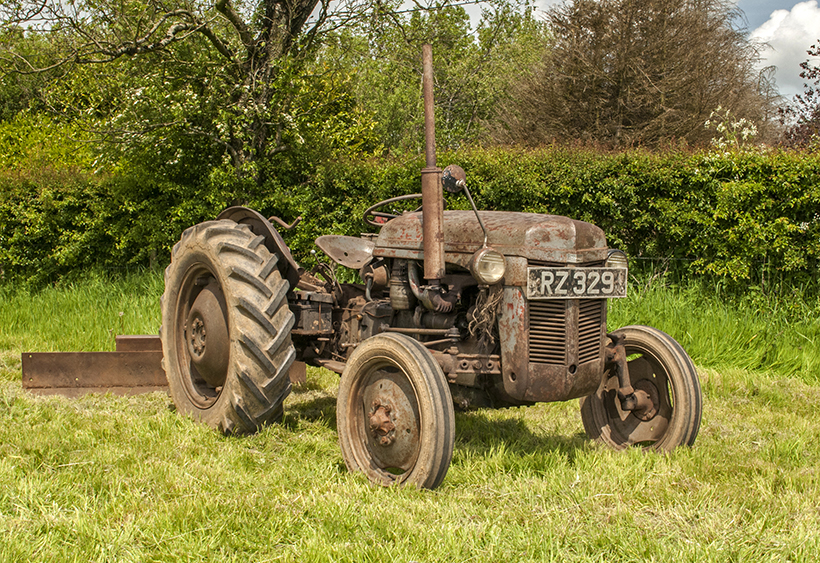
The 1954 TEF-20. It needed a new clutch, and Andy had to replace the seal in the front of the gearbox as well as fit a new heater plug.
“As far as the mechanics were concerned, it needed a new clutch, and I had to replace the seal in the front of the gearbox as well as fit a new heater plug. I bought a pair of used Goodyear, diamond-pattern rear tyres to help retain the period look but, other than that, the tractor was in good order. Even the lights on the mudguards were working!”
Content with his efforts to restore the tractor’s period appearance, Andy was keen to put it to some ‘period’ work. He lives down the road from Robert and John McKibbin, who grow a field of corn each year which they harvest with a binder and then thresh during their autumn working day. The TE-20 diesel has taken part in their cultivation and harvesting operations, as well as ploughing at the Vow Vintage Club working day, with a ‘butterfly’ reversible plough.
Local additions
“The four-cylinder 35 and the 135 both came from a local farming family known as ‘Reids of the Rock’,” Andy continued. “The Reids were mainly involved with pig farming, but also made hay in the summer as a cash crop. The 35 was another loader tractor, and I was told that all it had ever done was load muck and kick hay. I bought it after it had been parked in an open shed for about 20 years.”
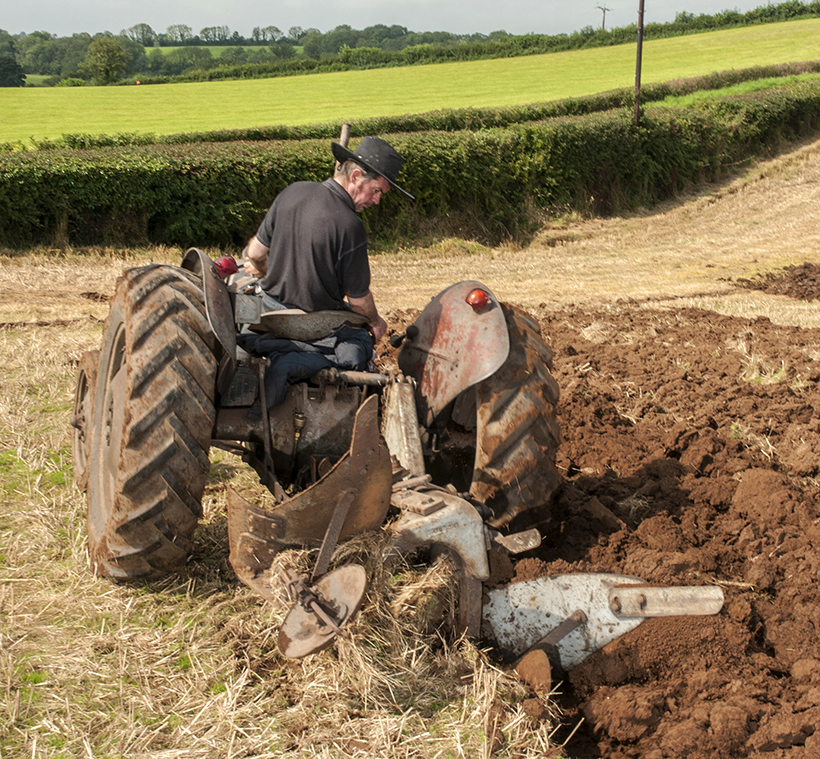
Andy enjoys working his tractors. Here he’s ploughing with the TEF at the Vow Vintage Club working day.
Anyone who knows the reputation of this model, won’t be surprised to discover that, after Andy brought it home, the old engine wasn’t easy to start. “When I bought it, there was a hole drilled in the dash for a short length of pipe which went to the air intake. I soon realised that it must have been a modification to make it easier to give her a wee ‘squirt of the can’ before the starting procedure. However, I had to tow it before it would fire up so, rather than mess about looking for an easy fix, I stripped the engine and gave it a complete rebuild.
“I fitted new cylinder liners and had a new set of pistons machined with an extra ring groove near the top. I reground the valves and fitted a new timing chain, to bring the engine closer to the original tolerances. When it had been running, it wasn’t smoking excessively so I didn’t need to rebuild the injection pump or the injectors, but I did alter the pump timing to find the sweet spot.
“I also fitted a high-speed starter and now the engine fires up without any trouble, although the hole in the dash is still there. The only other major mechanical job was fitting a new clutch and thrust bearing. I put the 35, onto a three-furrow, 10-inch plough, and it did the job without any bother at all, so I’m happy with the way it’s all turned out.”
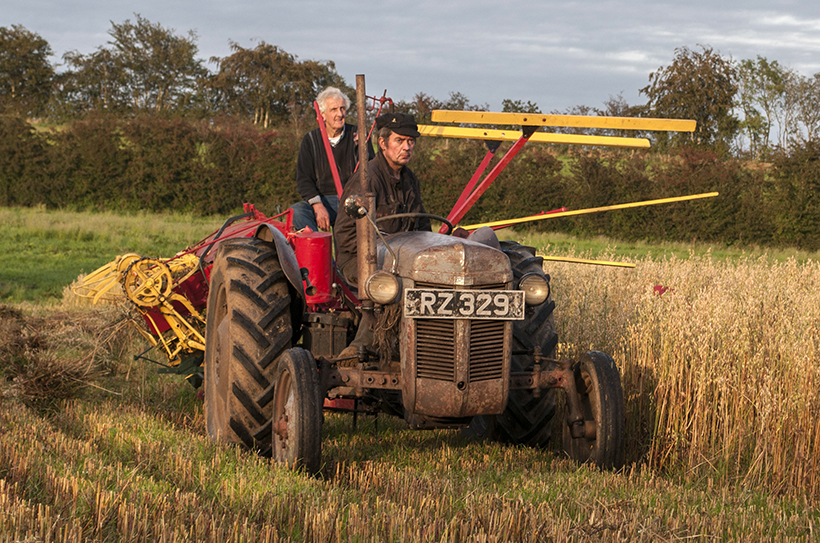
Binding corn (local name for oats) with John McKibbin and the ground-drive Sunshine binder.
Gradual improvement
The MF135 is a late model that was first registered in 1977, 13 years after the 100 Series ‘Red Giants’ were introduced. During that time, there had been many improvements over the original design which relied on the success and simplicity of its predecessor, the three-cylinder MF35.
Andy’s tractor is equipped with a dry-element air filter, a straight front axle, a larger, 10-gallon fuel tank and the accompanying, taller front grille. The optional power-assisted steering wasn’t specified by the first owner. Such was the in-built reliability of the MF135, that Andy has had very little to do to his example to keep it in good, working condition.
“I needed to replace the mudguards, so found a good secondhand pair and fitted them, together with the footplates, and then replaced the damaged grille and lights. The tractor also needed a new wiring loom, dynamo and regulator, and I fitted a pair of secondhand front tyres to maintain the period look.”

The 35 was another loader tractor that had been used for shovelling much for most of its life. Andy rescued it from an open shed, where it had been standing for about 20 years.
Of course, a tractor can’t really make its mark on the past without implements. Fortunately, Andy’s shed houses a collection of some of the equipment that might have been used behind the tractors in his collection. Attached to his TEF-20 is a Massey Ferguson grader, which he bought on the internet. He believes that it was used by the grounds staff at a college in Cambridgeshire and that the ripper teeth were probably never put into action.
The Ferguson hammer mill behind the MF 35 was bought recently in Co. Down. Andy has made some progress in bringing it back to working condition, but he still needs to fit a replacement pulley and new drive belts. He hopes to demonstrate it at the McKibbin brothers’ working day, processing some oats off the thresher into animal feed; a typical task for a local, mixed farm tractor during the 1950s and ’60s.
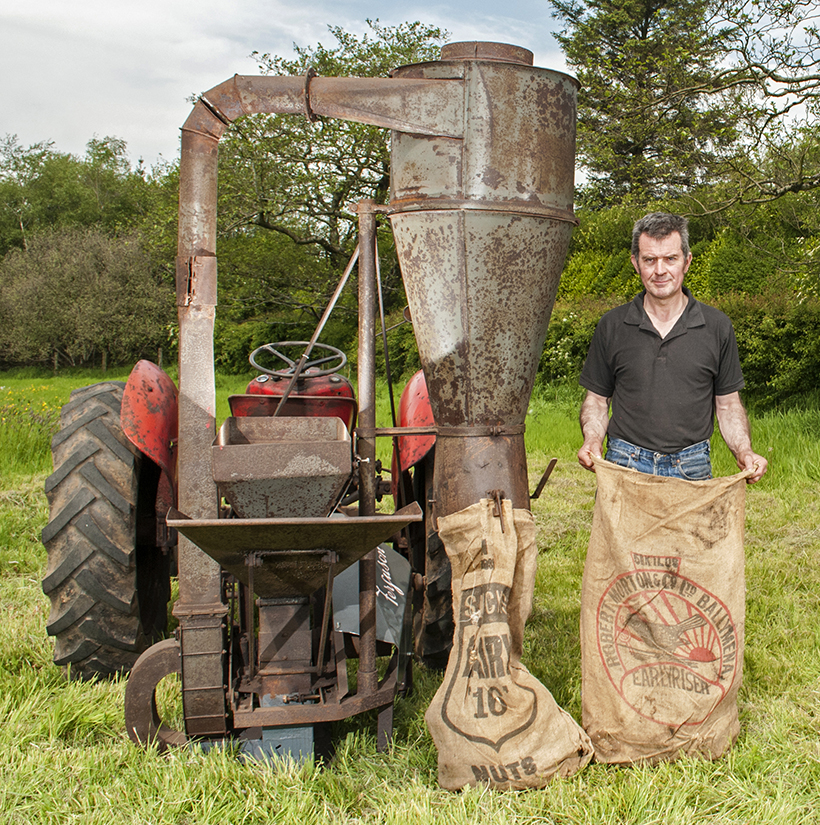
Even the jute bags are period-correct and local!
Most people who grew up in rural Ireland 40 years ago, will be familiar with the potato harvest, when the spuds were lifted out of the ground and gathered by hand. Well, Andy has a working example of the Ferguson spinner, complete with the top-link rocker attachment which helps accurate control of the working depth.
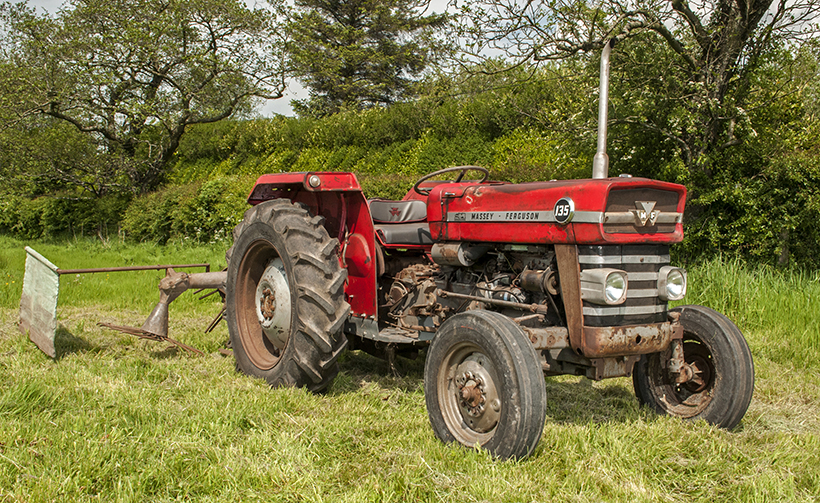
The MF135 is a late model that was first registered in 1977, 13 years after the 100 Series ‘Red Giants’ were introduced.
Some people see vintage tractors as an opportunity to recreate the original machine, often finished to amazingly high standards that are far above that achieved by the production line at Banner Lane, and the processes available at the time. Andy, however, takes pride in preserving the past, archiving local farming heritage in the machines which created it, and maintaining the working practices of that exciting era in agricultural advancement which led to the development of the Ferguson and Massey Ferguson tractors which have played such a vital part in our past.
For a money-saving subscription to Classic Massey & Ferguson Enthusiast, simply click here



